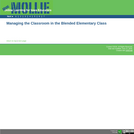
Managing the Classroom in the Blended Elementary Class
- Subject:
- Education
- Material Type:
- Activity/Lab
- Reading
- Provider:
- AEA
- Provider Set:
- OLLIE
- Author:
- Evan Abbey
- Date Added:
- 12/01/2016


Managing the Classroom in the Blended Elementary Class

Market to Market is a part of the Iowa Public Television. The website includes videos of feature stories and market analysis by analyst Ted Seifried. In addition, there is Market to Market in the classroom where there are videos on business, technology and science of agriculture.

This Guide, from Mental Health Literacy, includes six interactive web-based classroom-ready modules, a teacher self-study resource, lesson plans, print and video resources, PowerPoint presentations, evaluation options, and supplementary materials.Developers of the Mental Health and High School Curriculum Guide worked with The Washington Office of Superintendent of Public Instruction, The Jordan Binion Project, and CHI Franciscan Health to create a Washington State Version of the materials.

Decision-Making often refers to a multi-stage process that starts with some form of introspection or reflection about a situation in which a person or group of people find themselves. These ruminations usually lead to series of questions that need to be answered, or to a set of data that needs to be collected and analyzed, or to some calculations that need to be performed before someone can be in a position to make informed decisions and take appropriate actions.
In this document, we provide some simple examples of Quantitative Models, which are often found in a decision-making situation. We focus on the use of algebraic equations, probability models, the “Payoff Table” and “Decision Tree” models, to represent situations involving a sequence one or more of decisions over time. Concepts are illustrated with a large set of examples that can be presented during classroom instruction and can be practiced by the students, either individually or in groups, through homework or lab exercises.
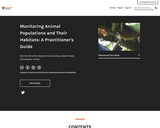
Short Description:
In the face of so many unprecedented changes occurring in our lives, our ecosystems and our globe, society is more often expecting scientists to provide information that can help guide communities toward a more sustainable future. This book is our attempt to provide a framework that managers of natural resources can use to design monitoring programs that will benefit future generations by providing the information needed to make informed decisions. In addition we offer tools and approaches that engage individuals in our society in monitoring programs. We firmly believe that people and communities who are empowered in the design and implementation of monitoring programs are more likely to use the information that results from the program, and support it over time. Data dashboard
Word Count: 106934
(Note: This resource's metadata has been created automatically by reformatting and/or combining the information that the author initially provided as part of a bulk import process.)

High-probability requests are one feasible classroom technique that can be effective in motivating students to engage in assigned classwork (Lee, 2006). The teacher first identifies an academic activity in which the student historically shows a low probability of completing because of non-compliance. The teacher then embeds within that low-probability activity an introductory series of simple, brief 'high-probability' requests or tasks that this same student has an established track record of completing (Belfiore, Basile, & Lee, 2008).
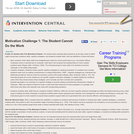
Profile of a Student with This Motivation Problem: The student lacks essential skills required to do the task. Areas of deficit might include basic academic skills, cognitive strategies, and academic-enabler skills. Here are teacher behaviors to help fix this motivation problem.
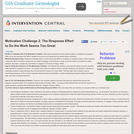
Although the student has the required skills to complete the assigned work, he or she perceives the ‘effort’ needed to do so to be so great that the student loses motivation. Learn teacher behaviors to fix this motivation problem.
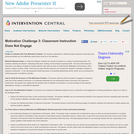
The student is distracted or off-task because classroom instruction and learning activities are not sufficiently reinforcing to hold his or her attention. Learn teacher behaviors to help fix this motivation problem.
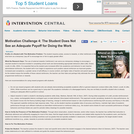
The student requires praise, access to rewards, or other reinforcers in the short term as a temporary ‘pay-off’ to encourage her or him to apply greater effort. Learn teacher behaviors to help fix this student motivation problem.
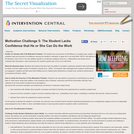
The student has a low sense of self-efficacy in a subject area, activity, or academic task and that lack of confidence reduces the student’s motivation to apply his or her best effort. NOTE: Self-efficacy is the student’s view of his or her own abilities specific to a particular academic area (e.g., mathematics) and should not be confused with self-esteem, which represents the student’s global view of his or her self-worth. Learn teacher behavior to help fix this student motivation problem.
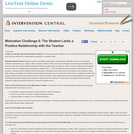
The student appears indifferent or even hostile toward the instructor and thus may lack motivation to follow teacher requests or to produce work. Learn teacher behaviors to help with this student motivation problem.
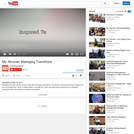
Lesson Objective: Maximize instruction by adding content into your transitions
Length: 5 min
Questions to Consider: What is the class's daily routine for learning the word of the day? Why does Ms. Noonan have students "sit like a scholar" and wait before she says the word of the day? How does the "Grab Bag Quiz" help with classroom management as students move back to their desks?

Madeline Noonan starts every class day with a morning meeting. Students use vocabulary to describe how they're feeling, practice speaking in front of peers, and gain trust by sharing a little about themselves. A daily "greeting" adds a bit of fun.

Concise lesson plan template asking for the 'essential question', objectives, interest approach, content/procedure/activity, and closure/check for understanding. Developed by Matt Kriefels.

The original Native American story component lesson was developed as part of an Office of Superintendent of Public Instruction (OSPI) and Washington State Leadership and Assistance for Science Education Reform (LASER) project funded through an EPA Region 10 grant. The stories were told by Roger Fernandes of the Lower Elwha Klallam tribe. Mr. Fernandes has been given permission by the tribes to tell these stories.As these lessons and stories were shared prior to the adoption of the Washington State Science Learning Standards in 2013, there was a need to align these stories with the current science standards. This resource provides a current alignment and possible lesson suggestions on how these stories can be incorporated into the classroom. This alignment work has been funded by the NGSS & Climate Science Proviso of the Washington State Legislature as a part of North Central Educational Service District's award.
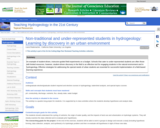
Background:
In my experience, I have discovered many common roadblocks to non-traditional and under-represented student participation in hydrogeology:
Time constraints -- many students have complicated schedules and demands on their time that a traditional undergraduate does not have. For example, many of these students are working full time, and required experiences outside of the classroom often pose scheduling conflicts for students.
Communication skills -- many under-represented students arrive in the classroom with communication skills that are not fully developed. Students are often learning English as they are learning the complex vocabulary of hydrogeology.
Math skills -- many students are under prepared in math and/or have math phobias
Funding -- many students are unable to pay laboratory and field trip fees.
I currently teach at minority serving institution. Here, I find that hands-on practice is the most successful learning experience for students. Students grasp concepts such as discharge, flux, and residence time more effectively when they are active participants in the learning process. The most effective method I have found for addressing these issues and encouraging under represented student participation in hydrogeology is to create student-designed group research projects. I used this strategy three quarters in a row, and the same students (as well as new students they recruit) continue to sign up for these courses. This trend, in addition to students' growing confidence in engaging in the scientific method, is my primary evidence for success.
Resources are very limited at my institution, so here are a couple of suggestions that work well.
Borrow equipment -- from other universities, from consulting companies, from colleagues.
Simplify analyses -- many interesting conclusions can be drawn from simply pH, conductivity, and temperature data. But, there are also relatively inexpensive test kits on the market that are sufficient for class purposes (ex. LaMotte urban water test kit ~$30).
Description
Everyone will have different class sizes, student preparation levels, and goals when attempting an exercise like this, so I will provide general information, which others can modify to meet their needs. Below I briefly outline the steps I take the students through during the project and highlight ideas for improving success for the targeted groups.
Form groups -- depending on class size, 2-4 students per group (I try to ensure the groups are balanced based on skills and student interests)
Choose topic -- I usually provide a list of possible topics and have students adapt a topic from the list that interests them. Students require a lot of guidance at this stage to assure selection of a manageable topic for a quarter-long project. This is the most important step - guiding students into a topic they are passionate about and where they can be successful is key. Students usually have no shortage of questions they want to answer about water in an urban environment! Since most of the students have spent their whole lives in an urban situation, they are deeply passionate about these issues.
Research literature -- students perform a background search for previous work on their topic to help guide them. I provide a laboratory session on how to search the library and databases for related information, as well as provide a list of recommended journals and websites. In addition, students locate supporting data (discharge, well levels, precipitation)
Plan study -- we discuss study design, sample types, sampling location, frequency. During this phase, students use maps, study weather patterns, and determine site accessibility.
Collect data -- we set aside lab periods for collecting data together. These are the sessions where you should be prepared to answer all sort of questions. Once the students begin implementing their study, many new questions come up.
Analyze and interpret results -- multiple lab periods are used to analyze data; student data are the basis of the remainder of labs. Techniques discussed are applied to their group projects.
Present findings -- students assemble posters and present results to their classmates.
Urban topics
Below is a short list of topics to stimulate ideas. Equipment required includes pH meter, conductivity meter, flow meter, Lamotte test kits.
Sources of N and P to the Los Angeles River
Contribution of golf courses to urban runoff
Extent of tidal influence on Ballona Creek
Metal fluxes from storm drains to the ocean
Relationship of land use to water quality
Relationship of population demographics to water quality
(Note: this resource was added to OER Commons as part of a batch upload of over 2,200 records. If you notice an issue with the quality of the metadata, please let us know by using the 'report' button and we will flag it for consideration.)
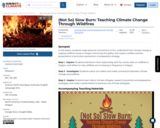
SYNOPSIS: In this lesson, students make personal connections to fire, understand how climate change is making wildfires worse in Oregon and across the globe, and create a wildfire solution presentation to promote a prevention or preparation strategy.
SCIENTIST NOTES: This lesson allows students to learn about the causes of wildfire and how they are induced by climate change. It also highlights locations at risk to wildfires in Oregon and ways students can develop tactics to promote effective management of wildfire events. The archival data on wildfires will enable them to interpret wildfire hotspots for contingency planning. This lesson is very engaging and is recommended for classroom use.
POSITIVES:
-This lesson can be taught in a language arts class or a science class.
-Students make a personal connection to fire before learning about climate change’s impact on wildfires.
-Students promote a prevention or preparation strategy to share with their class, school, or community.
ADDITIONAL PREREQUISITES:
-It would be helpful for students to have some background knowledge of what makes fire burn. The resources Heat and Fuel and Oxygen can provide more context for students.
-The data in the sortable table titled, Oregon Biggest Fires, comes from this article. You can access the data by clicking, “Download the data.”
DIFFERENTIATION:
-If teachers want to provide more context on active fires in Oregon, this map provides up-to-date information.
-This video can provide additional information and also serve as inspiration for students to create their own presentations.
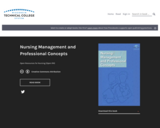
Word Count: 108070
ISBN: 9781734914184
(Note: This resource's metadata has been created automatically by reformatting and/or combining the information that the author initially provided as part of a bulk import process.)

Files for this webinar are available at: https://osf.io/ewhvq/ This webinar focuses on how to use the Open Science Framework (OSF) to tie together and organize multiple projects. We look at example structures appropriate for organizing classroom projects, a line of research, or a whole lab's activity. We discuss the OSF's capabilities for using projects as templates, linking projects, and forking projects as well as some considerations for using each of those capabilities when designing a structure for your own project. The OSF is a free, open source web application built to help researchers manage their workflows. The OSF is part collaboration tool, part version control software, and part data archive. The OSF connects to popular tools researchers already use, like Dropbox, Box, Github and Mendeley, to streamline workflows and increase efficiency.